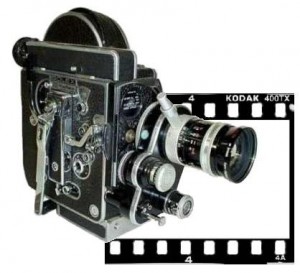 This past weekend has been a sad time for our family. I married into an Auburn family, and my in-laws live in the area. Almost everyone in my husband’s immediate family attended Auburn University, and I have come to love the blue-and-orange nation.
This past weekend has been a sad time for our family. I married into an Auburn family, and my in-laws live in the area. Almost everyone in my husband’s immediate family attended Auburn University, and I have come to love the blue-and-orange nation.
My mother-in-law called my husband Sunday morning to tell us about the shooting in an apartment complex near the university. My husband and I were visiting family in Kentucky, and we immediately took to Twitter to find out more. It was shocking; reports were pouring in that three people had been killed, some AU present and former football players, several others wounded. How and why would such a senseless act take place? Was this some horrible rivalry gone too far? Was this a fight between AU football players? What was going on in the beloved Plains?
Initial reports coming in from news organizations and those at the party where the shooting took place claimed three AU football players had been killed, up to seven others injured. Rumors flew about what was seen, what was said, what happened.
When the dust settled, there would be three lives claimed. The families of Edward J. Christian, 20, and Ladarious K. Phillips, 20, both former AU football players, and Demario A. Pitts, 20, received the most horrible news that their loved ones were no longer with them. Xavier D. Moss, 19, John Q. Robertson, 20, and Eric R. Mack, 20, a current member of the AU football team, are recovering from gunshot wounds. The shooter has been identified as Desmonte D. Leonard, 22, a man authorities say is not associated with the university and is to be armed and dangerous. He remains at large with a bounty totaling $30,000.
As both my husband and I held these families and the Auburn community in our thoughts, I began to watch events unfold from a public relations standpoint. I waited for statements to come out from the university, to hear the press conference the Auburn Police Department would give about the incident, to see the press releases that would be issued, and other techniques used in crisis communications.
The shooting took place around 10 p.m. (Central Time) Saturday, and the APD held a press conference at 11 a.m. Sunday where Auburn Police Chief Tommy Dawson identified the victims and the shooter. At 1 p.m. Sunday, the Auburn University Office of Communications and Marketing released statements from President Jay Gogue, AU Football Coach Gene Chizik and Director of Athletics Jay Jacobs. At 2 p.m., the APD Public Information Office issued a press release about the incident. At 2:15 p.m., the AU Office of Communications and Marketing provided information to counseling services for all students. Within 24 hours of the shooting, the major players involved had used the tried-and-true tactics to dispel rumors and clear uncertainties surrounding one of the most brutal crimes in the history of the university while offering condolences and grief-counseling services.
The key to crisis communications is planning. When I begin to put a crisis communications plan together for an organization, I expect the worst and hope for the best. Any organization, regardless if it’s an educational institution or a small business, should have prepared crisis communications plans. Below I have listed the primary steps for any basic crisis communications plan.
1) Prepare a SWOT Analysis:
A Strength, Weakness, Opportunity and Threat Analysis helps organizations see what they are good at (Strength) and not so good at (Weakness) now and where they can be good (Opportunity) and not so good (Threat) in the future. You use your SWOT Analysis to develop a plan of action to capitalize on your strengths and opportunities while minimizing and correcting your weaknesses and threats.
In crisis communications planning, you can use the SWOT Analysis to develop possible emergency scenarios that your organization may face one day and how to handle each of these unique situations. In crisis communications, you plan for stormy days when the sun is shining.
Auburn University and the Auburn Police Department have plans on file that deal with shootings involving students. Crisis communications plans will never exactly match each unique crisis, but when you have plans prepared for the type of emergency, you can handle the situation effectively and efficiently.
2) Identify your audiences and methods of communications:
Each of your crisis situations will affect an unique set of audiences and how you inform them. Not all your audiences receive information the same way, so segmenting your audiences and the best methods of reaching them will maximize your communications efforts to reach the most people possible.
When Auburn University released official statements on the shooting, they used different channels to communicate to a diverse audience. Statements were sent to various media outlets, ensuring readers, listeners and viewers would receive them, and also put on social media sites and the front of the Auburn University website.
3) Craft your messages:
After you identify the methods of communications for each audience, you will need to tailor your specific messages. In crisis communications, you want to be able to provide as much information as possible as quickly as you can. The same message, though, will not work for each channel. If in Step 2, you identified an audience that would benefit the most from a text messaging system and another audience that needs voice mail, your messaging for the texts would need to be shorter and more concise than the voice mail.
Messages coming out of AU and APD include condolences and support to the family of the victims and students, the relentless search for justice, and imploring the public to call in any information that may help in the capture of the shooter.
4) Select your spokespersons:
When an organization is facing a crisis communications event, the first instinct may to put the highest person in the public light. Don’t. Just as each emergency is unique, so should your spokesperson. Someone in the organization other than the boss may be more knowledgeable about the incident and can explain the details better. Also, keeping your boss on reserve can help if your identified spokesperson doesn’t work out or makes a mistake. You have the option, then, to pull in the higher person to correct any errors.
In the statements released by Auburn University after the shooting, three spokespersons were used. Different crisis events can call for the use of more than one spokesperson. As the victims of the shooting involved not only AU students but also athletes, the president of the college, athletic director and football coach were all used to express heartfelt condolences and focus on taking care of the students and athletes.
5) Set up your media operations:
Crises will draw media attention; be ready. A good rule of thumb is to be able to respond within one hour of a crisis taking place. A plan of action for each possible emergency scenario needs to be prepared to identify:
-how will you answer media queries and who will you work with to obtain the information you need
-will you and where will you set up a call center for media queries
-how will you track media queries and provide follow-up information
-is a statement and response to query enough to handle interest
-when do you deem that a press conference has become necessary
-a timeline for providing consistent information to the media
-how, when and where will you prep your spokespersons
-will you and when will you allow media to enter the site or will you supply photos/video of the event to the media
-how will you work with other agencies, such as the police, that are involved
Due to the high interest in the case and to dispel rumors, the APD went ahead and held a press conference first to answer media queries about the shooting. Personnel in the Public Information Office were staged to answer media queries and assist with media escort around the apartment complex. The department continues to update information on the case through press releases and additional press conferences, such as when the arrest of Jeremy S. Thomas, 18, who fled the scene with the shooter, took place Monday.
6) Evaluate your crisis response:
The goal of crisis communications is to come out of the event maintaining, if not strengthening, your organization’s reputation. You want to end the crisis as soon as possible; the longer a crisis goes on, the more damage it can do to a reputation. Ending the crisis sooner rather than later and explaining how your organization will move on from this gives you a better chance at preserving your good name.
After a crisis is over, then you can evaluate how the event affected your reputation and how your crisis communications plan worked. Were you able to maintain or even develop public trust in your organization? What were your strengths in handling the situation and what could you have done better? Once you have these answers, you can implement what you’ve learned to improve your crisis communications plan for the future.
The shooting crisis is ongoing for the APD as officers continue to search for the shooter. Auburn University is already beginning the process of moving on, offering counseling services to students who need it. When the crisis comes to an end, both AU and APD communications professionals will be able to gage if they were effective in handling this crisis, how it has affected the reputation of both organizations, and how the working relationship between the two entities stands. A preliminary indication can be seen in the national outpouring of support for the university and community on social media sites.
Crisis events can be scary, but they can also be an opportunity for any organization. If you have a plan in place and execute that plan appropriately, you not only can protect your reputation, but you can actually come out of a crisis with a stronger public perception. Plan now for what might be and practice it.
My family and I continue to keep the Auburn community in our thoughts, and, as always, War Eagle.
Do you think Auburn University and the Auburn Police Department are handling the shooting incident effectively? Leave your thoughts in the comments.



